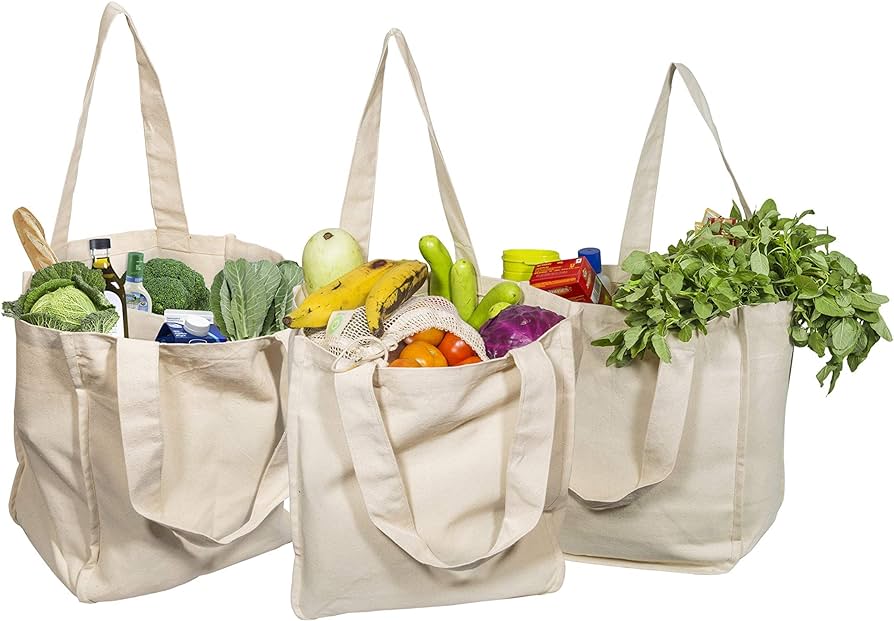
Welcome to 'The Eco Friendly Home: 8 Ways to Live More Sustainably.'
In this article, we will explore practical solutions for those who desire a greener lifestyle.
Discover how to make your home more energy-efficient with the use of appliances, solar panels, and LED lights.
Learn the benefits of insulation, green roofing, and sustainable materials.
We will also delve into the benefits of composting and rainwater harvesting.
Join us on this journey towards a sustainable and environmentally friendly home.
Energy-Efficient Appliances
When striving to create an eco-friendly home, one essential step is to invest in energy-efficient appliances. Energy efficiency is a crucial aspect of designing a sustainable home, as it reduces energy consumption and minimizes the carbon footprint. By opting for appliances with energy-efficient design, homeowners can enjoy significant energy savings while contributing to a greener environment.

These appliances are designed to use less energy without compromising on performance, ultimately leading to lower utility bills. Additionally, integrating renewable energy sources such as solar panels into the home's energy system can further enhance its eco-friendliness. By harnessing clean and renewable energy, homeowners can reduce their reliance on fossil fuels and decrease environmental impact.
Investing in energy-efficient appliances and renewable energy sources is a proactive step towards creating a more sustainable and eco-friendly home.
Solar Panels
Investing in solar panels is a crucial step in creating an eco-friendly home, as they offer a sustainable and renewable energy solution that seamlessly integrates with energy-efficient appliances. Solar power is a form of renewable energy that harnesses the sun's rays and converts it into electricity.
By installing solar panels on your roof, you can generate your own clean energy and reduce your reliance on fossil fuels. This not only helps to combat climate change but also lowers your electricity bills.
Solar panels are a long-term investment that pays for itself over time, as the cost of solar power continues to decrease. Additionally, solar energy systems require minimal maintenance and have a lifespan of 25 to 30 years, making it a reliable and cost-effective solution for powering your home.
Insulation
Another important aspect of creating an eco-friendly home is ensuring proper insulation, which seamlessly complements the use of solar panels.
Insulation plays a crucial role in reducing energy consumption and waste, making it an essential component of sustainable living. By effectively insulating your home, you can significantly reduce heat loss during winter and minimize heat gain during summer. This translates into lower energy bills and a reduced carbon footprint.

Investing in insulation not only benefits the environment but also improves the comfort and livability of your home. There are various insulation options available, such as fiberglass, cellulose, and spray foam, each with its own advantages and considerations.
Proper insulation ensures that your home remains energy-efficient, reducing waste and helping you live more sustainably.
LED Lights
LED lighting is a key element in achieving sustainability in your eco-friendly home. By using energy-saving technology and eco-friendly lighting, you can reduce your carbon footprint and lower your energy consumption. Here are four reasons why LED lights are a great choice for your home:
- Energy efficiency: LED lights are highly efficient, converting most of the energy they consume into light rather than heat. This means they use less electricity compared to traditional incandescent bulbs, resulting in significant energy savings.
- Long lifespan: LED lights have an impressive lifespan, lasting up to 50,000 hours or more. This means fewer replacements and less waste, contributing to a more sustainable lifestyle.
- Eco-friendly materials: LED lights are made from non-toxic materials, making them safe for both the environment and your health. They do not contain harmful substances such as mercury, which can be found in other types of lighting.
- Versatility: LED lights come in various shapes and sizes, making them suitable for different applications in your home. Whether you need task lighting in the kitchen or ambient lighting in the living room, LED lights can provide both functionality and style.
Investing in LED lighting is a practical and eco-friendly choice for your home. Not only will you reduce your energy consumption and save money, but you will also contribute to a greener, more sustainable future.
Green Roofing
Continuing the focus on sustainable features for your eco-friendly home, an innovative option to consider is the implementation of green roofing.
Green roofing refers to the practice of covering a roof with vegetation, creating a living, natural layer. This type of roofing offers numerous benefits.
Firstly, it enhances energy efficiency by providing insulation, reducing the need for heating and cooling.

Secondly, it helps manage stormwater runoff by absorbing rainwater and reducing the strain on drainage systems.
Additionally, green roofing improves air quality by absorbing pollutants and releasing oxygen. It also provides a habitat for birds, insects, and other wildlife, promoting biodiversity in urban areas.
Installing a green roof can be done through various methods, such as extensive systems with lightweight planting and intensive systems for more elaborate gardens.
Considering these advantages, green roofing is indeed a sustainable and environmentally-friendly choice for your home.
Composting
To incorporate sustainable practices into your eco-friendly home, consider implementing composting as a means of waste management. Composting is a natural process that converts organic waste into nutrient-rich compost, which can be used to nourish your garden or plants. Here are four ways to incorporate composting into your lifestyle:
- Use composting bins: Invest in a composting bin, which provides an organized and contained space for composting. This helps control odors and prevents pests from accessing the compost.
- Vermicomposting: Another option is vermicomposting, which involves using worms to break down organic waste. This method is especially suitable for smaller spaces like apartments or balconies.
- Collect kitchen scraps: Collect fruit and vegetable peels, coffee grounds, and eggshells in a small container. Empty the contents into your composting bin regularly.
- Maintain moisture and aeration: Regularly turn the compost and keep it moist but not wet. This promotes the breakdown of materials and prevents unpleasant smells.
Rainwater Harvesting
Incorporating rainwater harvesting into your eco-friendly home allows you to conserve water and reduce your reliance on traditional water sources. With water scarcity becoming an increasing concern, it is crucial to implement sustainable water management practices.
Rainwater harvesting involves collecting and storing rainwater for later use. This can be done by installing a rainwater harvesting system that includes gutters, downspouts, and storage tanks. The collected rainwater can then be used for various purposes such as watering plants, flushing toilets, or washing clothes.

By utilizing rainwater, you can significantly reduce your water consumption and contribute to water conservation efforts. Additionally, rainwater harvesting helps to alleviate the strain on municipal water supplies, especially during periods of drought.
It is a simple yet effective way to make your home more sustainable and reduce your environmental impact.
Sustainable Materials
When it comes to creating an eco-friendly home, the choice of materials plays a significant role.
One important consideration is the use of natural materials versus synthetic ones. Natural materials, such as bamboo, cork, or reclaimed wood, are renewable and biodegradable, making them a more sustainable choice.
Additionally, the longevity of sustainable materials should be taken into account, as durable materials can reduce the need for frequent replacements and ultimately reduce waste.
Natural Vs. Synthetic Materials
The use of natural and synthetic materials in creating a sustainable home is essential for minimizing environmental impact and maximizing resource efficiency. When choosing materials for your eco-friendly home, it is important to consider the benefits of natural materials and the environmental impact of synthetic materials. Here are four key points to keep in mind:
- Benefits of natural materials:
- Natural materials such as wood, bamboo, and cork are renewable resources that can be harvested sustainably.
- They are biodegradable and have a lower carbon footprint compared to synthetic materials.
- Environmental impact of synthetic materials:
- Synthetic materials, such as plastics and synthetic fibers, are derived from non-renewable resources and often require high energy consumption during production.
- These materials contribute to pollution and waste, and can take hundreds of years to decompose.
- Choose natural alternatives:
- Opt for natural alternatives whenever possible, such as using reclaimed wood instead of virgin timber, or natural fiber textiles instead of synthetic fabrics.
- These choices can reduce your environmental impact and promote a healthier living environment.
- Consider durability and longevity:
- When selecting materials, consider their durability and longevity.
- Natural materials tend to be more durable and can withstand the test of time, reducing the need for frequent replacements and minimizing waste.
Longevity of Sustainable Materials
Utilizing sustainable materials ensures the longevity and environmental impact of your eco-friendly home. When it comes to creating a sustainable living space, choosing the right materials is crucial. From the construction phase to the interior design, opting for eco-friendly building materials can greatly reduce your carbon footprint and contribute to a healthier planet.

Sustainable materials are those that are responsibly sourced, have low environmental impact, and can be reused or recycled. By using these materials, you can help minimize waste, conserve natural resources, and reduce energy consumption.
Additionally, upcycling furniture is another great way to incorporate sustainable materials into your home. By repurposing old items and giving them a new life, you not only save money but also minimize the need for new production, thereby reducing your ecological footprint.
Frequently Asked Questions
How Do Energy-Efficient Appliances Help in Reducing Energy Consumption and Utility Bills?
Energy-efficient appliances play a crucial role in reducing energy consumption and utility bills. By using advanced technologies, these appliances are designed to minimize wasted energy, resulting in significant cost savings for homeowners.
What Are the Different Types of Solar Panels Available for Residential Use?
When it comes to residential use, there are various types of solar panels available. Efficiency is a key factor to consider when choosing the right solar panel for your home.
How Does Proper Insulation Contribute to Energy Efficiency in the Home?
Proper insulation is a cost-effective solution that contributes to energy efficiency in the home. It reduces heat transfer, minimizing the need for heating and cooling, thus reducing energy consumption and carbon emissions, making it an eco-friendly choice.
What Are the Benefits of Using LED Lights Over Traditional Incandescent Bulbs?
Energy saving lighting, such as LED bulbs, offers numerous advantages over traditional incandescent bulbs. These include lower energy consumption, longer lifespan, reduced heat emission, and greater environmental sustainability. LED lights are an excellent choice for those seeking a more eco-friendly home.
How Does Green Roofing Benefit the Environment and the Home's Energy Efficiency?
Green roofing benefits the environment and improves a home's energy efficiency by reducing heat transfer, lowering energy consumption, and mitigating stormwater runoff. It provides insulation, reduces urban heat island effect, and increases biodiversity.

 Business & FinanceHealth & MedicineTechnologyLifestyle & CultureScience & EnvironmentWorld NewsPrivacy PolicyTerms And Conditions
Business & FinanceHealth & MedicineTechnologyLifestyle & CultureScience & EnvironmentWorld NewsPrivacy PolicyTerms And Conditions
